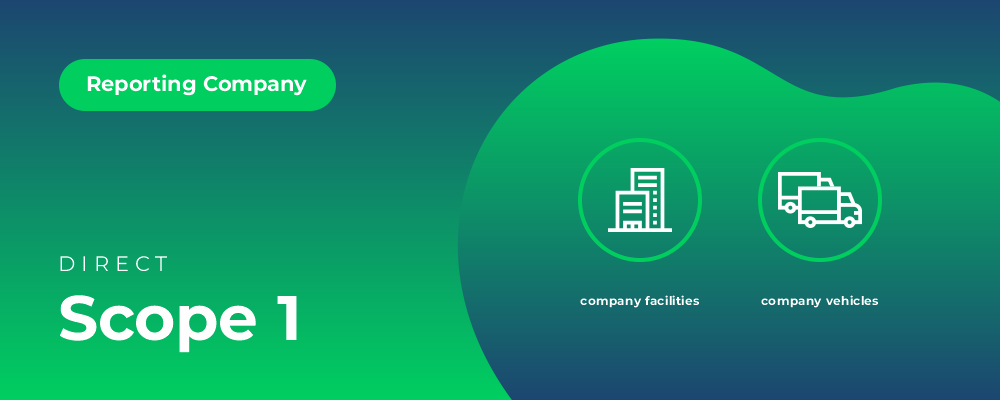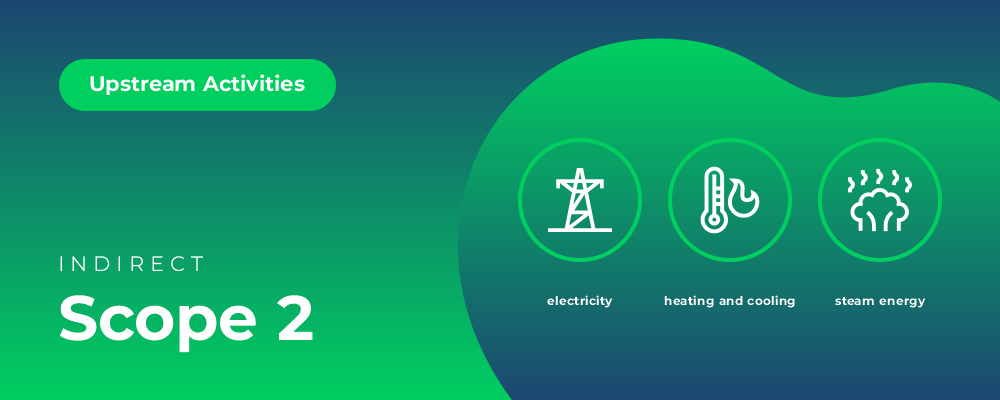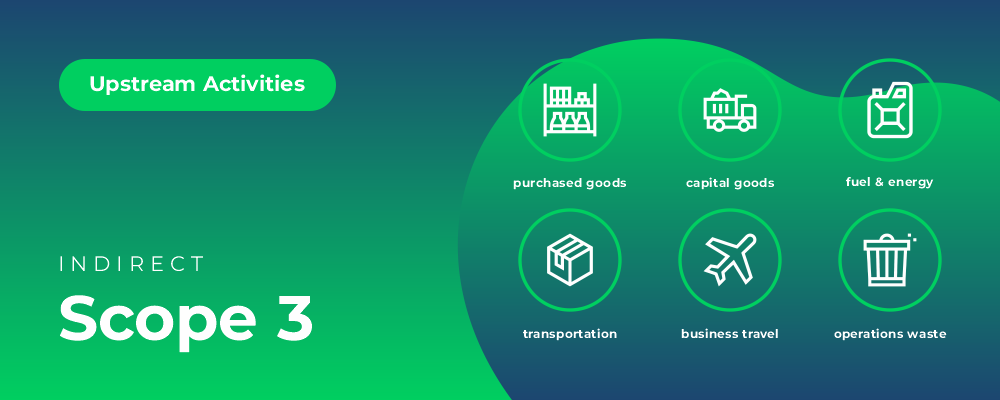Carbon emissions are a major contributor to climate change. With tightening regulations and growing pressure from consumers and investors, organizations of all types and sizes have a responsibility to reduce their carbon footprint. One way to understand and track an organization's carbon emissions is through the use of the "Scope" framework, which categorizes emissions into three distinct categories: Scope 1, Scope 2, and Scope 3. In this article, we will explore the details, differences, and distinctions of each of these scopes, and why it is important for organizations to track and reduce their emissions in each of these categories.
Scope 1
Scope 1 emissions refer to direct emissions from sources that are owned or controlled by an organization. These emissions are caused by the combustion of fossil fuels, such as natural gas, coal, and oil, and can include emissions from boilers, vehicles, and other equipment. For example, a manufacturing facility that burns natural gas to power its operations would have Scope 1 emissions from the combustion of that gas. These emissions are considered the most direct and easiest to measure and track, as they occur on-site and are under the direct control of the organization.
Scope 1 emissions can be further divided into several subcategories. These subcategories include:
- Combustion of fossil fuels: This includes emissions from the burning of fossil fuels such as natural gas, coal, and oil in boilers, engines, and other equipment.
- Fugitive emissions: These are emissions that occur as a result of leaks or spills from equipment or processes that contain or use fossil fuels. Examples include emissions from oil and gas wells, and venting or flaring of gases during the production, transportation, or storage of fossil fuels.
- Mobile sources: These emissions come from vehicles and other mobile equipment that are powered by fossil fuels, such as cars, trucks, and heavy machinery.
- Stationary sources: These emissions come from stationary equipment and processes that are powered by fossil fuels, such as boilers, generators, and other industrial equipment.
It's important to note that each of these subcategories may have different sources of emissions and different ways to measure and reduce them. For example, reducing emissions from mobile sources may require investing in electric or hybrid vehicles, while reducing emissions from stationary sources may require investing in renewable energy or implementing energy efficiency measures.
Additionally, organizations should take into consideration the specific context of their operations and the specific subcategories that apply to them. For example, a company that operates heavy machinery in a mining operation will have a different set of emissions to track and reduce than a company that operates a fleet of delivery trucks.

Scope 2
Scope 2 emissions refer to indirect emissions from the generation of electricity, heat, or steam that an organization consumes. These emissions are often caused by power plants that are not owned or controlled by the organization but are used to provide the energy needed to power an organization's operations. For example, an office building that purchases electricity from a local utility vendor would have Scope 2 emissions from the generation of that electricity at the power plant. These emissions are considered less direct and more difficult to measure and track, as they occur off-site and are not under the direct control of the organization. However, organizations can still take steps to reduce their Scope 2 emissions by purchasing renewable energy or implementing energy efficiency measures.
Scope 2 emissions can also be further divided into several subcategories. These subcategories include:
- Purchased electricity: This includes emissions from the generation of electricity that is purchased by the organization and consumed on-site. This is the most common type of Scope 2 emissions and typically represents the largest portion of an organization's Scope 2 emissions.
- Heat and steam: This includes emissions from the generation of heat and steam that is purchased by the organization and consumed on-site. This could include emissions from district heating systems, where a central facility generates heat and steam that is distributed to multiple buildings, or from a cogeneration system, where heat and electricity are generated simultaneously.
- Cooling: This includes emissions from the generation of cooling, such as refrigeration or air conditioning, that is purchased by the organization and consumed on-site.
It's important to note that just as in scope 1, each of these subcategories may have different sources of emissions and different ways to measure and reduce them. For example, reducing emissions from purchased electricity may require investing in renewable energy or implementing energy efficiency measures, while reducing emissions from cooling may require investing in more energy-efficient cooling systems.
Organizations can track and reduce their emissions in each of these subcategories by implementing energy management strategies such as energy efficiency, demand response, and renewable energy. Additionally, organizations can purchase green power, renewable energy certificates (RECs) or carbon offsets to offset their emissions.

Scope 3
Scope 3 emissions refer to all other indirect emissions that are a result of the activities of an organization, but occur from sources not owned or controlled by the organization. These emissions can include a wide range of activities, such as the extraction and production of purchased materials, employee commuting, and waste disposal. For example, a retail company that sources products from overseas suppliers would have Scope 3 emissions from the transportation of those products from the suppliers to the company's warehouses. While Scope 1 and 2 reporting is done regularly by large companies, Scope 3 emissions are more challenging to report on. These emissions can be more complex and difficult to quantify than Scope 1 and 2 emissions, as they occur across a wide range of activities and may involve multiple organizations. However, they can represent a significant portion of an organization's overall carbon footprint and should not be overlooked in efforts to reduce emissions.
Scope 3 emissions can also be further divided into several subcategories. These subcategories include:
- Upstream emissions: These emissions occur from the extraction, production, and transportation of materials and products that are used or consumed by the organization. This can include emissions from the production of raw materials, such as oil and gas, as well as emissions from the manufacturing, transportation, and distribution of products.
- Downstream emissions: These emissions occur from the use and disposal of products and materials by the organization's customers and end-users. This can include emissions from the transportation and use of products, as well as emissions from the disposal of waste.
- Employee commuting: These emissions occur from the commuting of employees to and from work, including emissions from the use of personal vehicles, public transportation, and air travel.
- Business travel: These emissions occur from travel related to business, such as travel by employees for meetings, conferences, and training.
- Investments: These emissions occur from investments such as stocks and bonds held by the organization.
- Outsourced activities: These emissions occur from activities that are outsourced by the organization, such as cleaning, maintenance, and waste management.
It's important to note that each of these subcategories may have different sources of emissions, and different ways to measure and reduce them. For example, reducing emissions from upstream emissions may require sourcing materials from more sustainable suppliers, while reducing emissions from employee commuting may require implementing telecommuting policies or investing in public transportation.
Organizations can track and reduce their emissions in each of these subcategories by implementing sustainable procurement, implementing sustainable travel policies, and evaluating their investments. Additionally, organizations can offset their emissions by investing in carbon offset projects and purchasing carbon credits.

In Conclusion
It is important for organizations to track and reduce their emissions in each of these scopes, as each scope represents a different aspect of an organization's carbon footprint. By focusing on reducing emissions in each scope, organizations can take a comprehensive and holistic approach to reducing their carbon footprint. For example, an organization may focus on reducing its Scope 1 emissions by investing in renewable energy and implementing energy efficiency measures, while also reducing its Scope 3 emissions by sourcing materials from more sustainable suppliers. For more examples, check out our previous article where we discuss 12 strategies to reduce your company's carbon footprint.
One of the key ways organizations can track and reduce their emissions in each of these scopes is through the use of greenhouse gas (GHG) accounting and reporting. GHG accounting is the process of measuring, quantifying, and reporting an organization's emissions, and is a crucial step in understanding and managing an organization's carbon footprint. Many organizations use the GHG Protocol, a widely recognized standard for GHG accounting and reporting, to guide their emissions tracking and reporting efforts. It forms one of the essential foundations for a company’s ESG reporting.
In addition, companies are increasingly reporting their scope 3 emissions as part of their sustainability reporting and disclosure. Investors and stakeholders are increasingly looking for companies to be transparent about their environmental impacts and set targets to reduce their emissions.
Reducing carbon emissions is a critical issue for organizations of all types and sizes. By understanding the distinctions between Scope 1, 2, and 3 emissions, organizations can take a comprehensive and holistic approach to reducing their carbon footprint.
But the first step in reducing emissions is to start with scope 1. By measuring energy, water, and gas consumption, organizations can gain a better understanding of their emissions and identify areas for improvement. That's why we strongly encourage organizations to take action and contact sales@rhino.energy to start mapping scope 1. Rhino is a leading provider of energy management and sustainability solutions that can help organizations track and reduce their emissions. With their help, organizations can not only reduce their carbon footprint but also save money and improve their bottom line.

